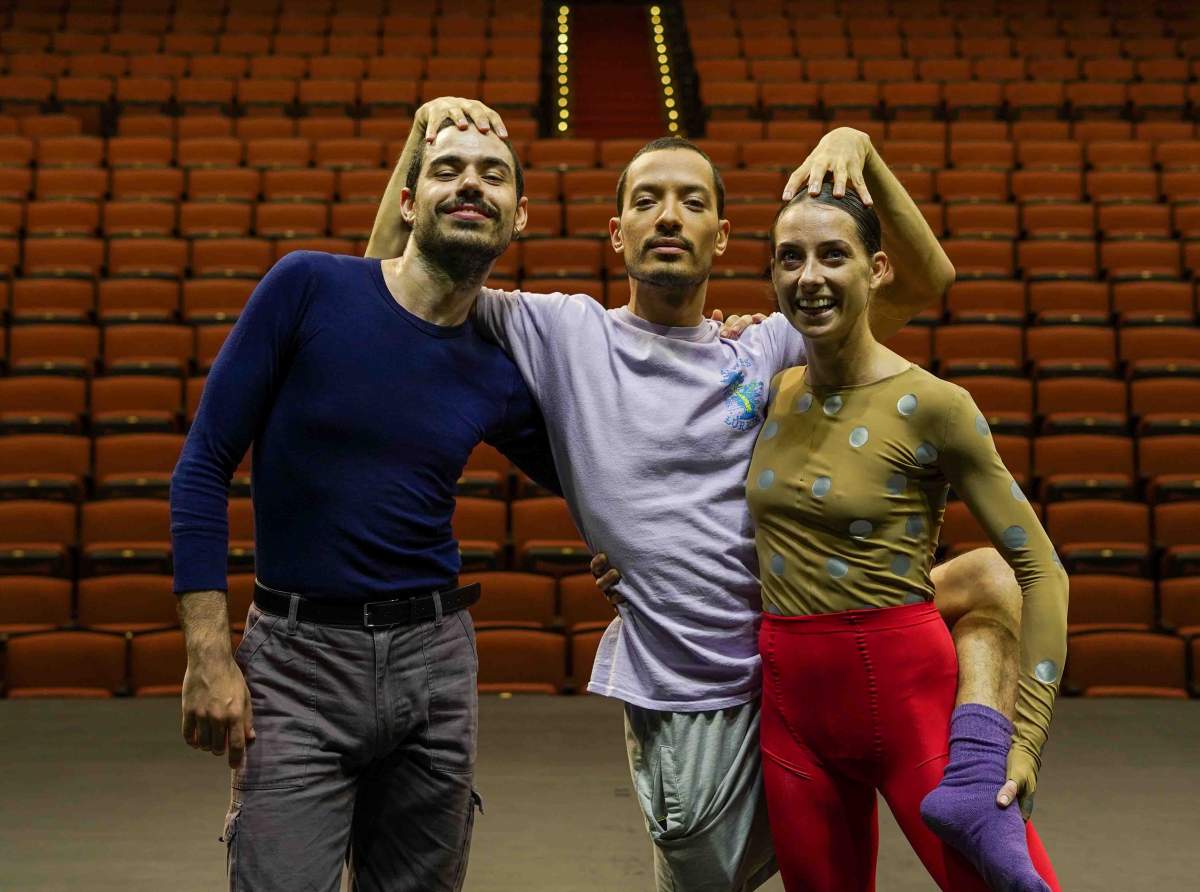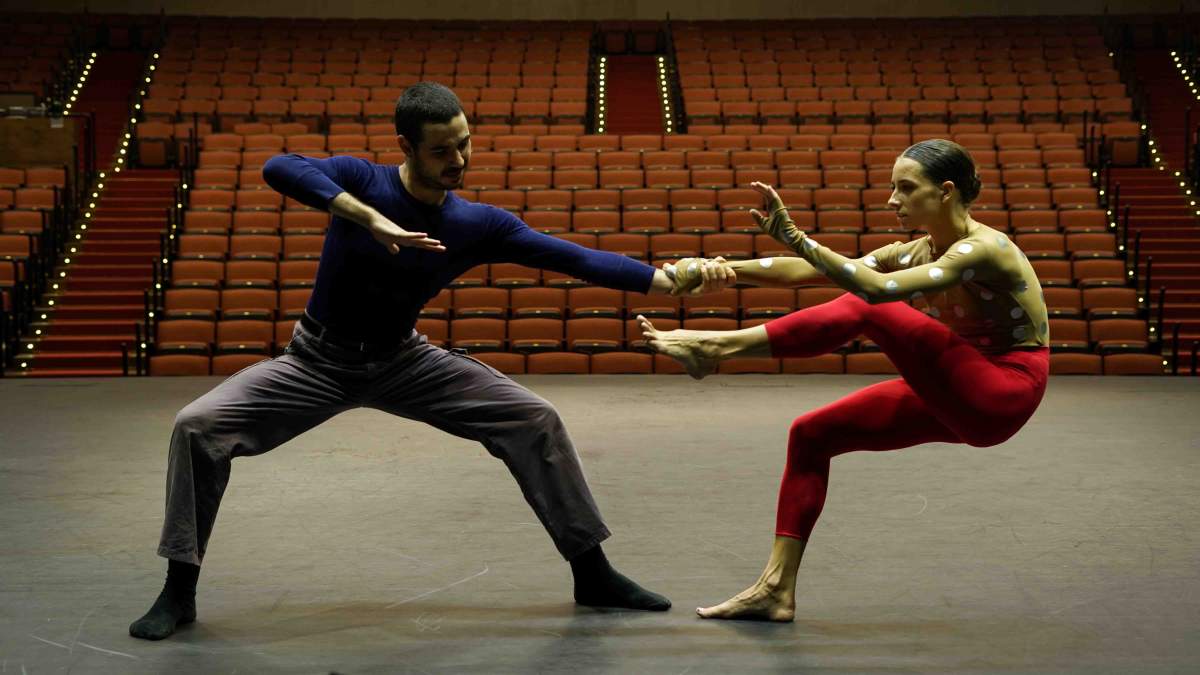Are you a journalist? Please sign up here for our press releases
Subscribe to our monthly newsletter:
When people tell Shahar Binyamini that they do not understand dance, he responds by saying that he doesn’t either. Coming from a prolific choreographer and former member of the Batsheva Dance Company, whose dance career spans over fifteen years, this is a surprising statement. “Dance isn’t a language you need to learn; it is beyond language. It runs deeper than words.” Likewise, he says, science is a dive into the unknown.
For most of 2020, Shahar, alongside and together with Weizmann Institute of Science investigators, was busy creating as part of an experimental artist’s residency program, supported by Weizmann’s Braginsky Center for the Interface between Science and the Humanities. Following the success of "TNUDA", their first project together at Weizmann, Prof. Atan Gross from the Department of Biological Regulation initiated Shahar's return to campus to participate as choreographer in a creative exchange with scientists. To advance their mutual learning and inspiration, Shahar’s creative process relied on interaction with an engaged audience of scientists that provided meaningful input and feedback throughout. The culmination of his artistic efforts, a dance performance aptly named – “evolve: when science meets dance”, will debut on stage at the Michael Sela Auditorium later this month.
Prof. Atan Gross: "I wished for this residency program at the Weizmann Institute to draw the attention of other scientists to dance – and that of dancers to science"
An Enlightened Movement
Dance and science are seemingly worlds apart. Science is verbal, relies on precise protocols, and presents the world with its outcomes in a commonly accepted language. Dance, on the other hand, is a physical and sensual profession whose products are mainly visual and auditory. But both involve self-discovery, perseverance, continuous learning, and the presentation of outcomes to the world.
“We are similar in that we are people who are interested in creating and telling a story,” says Shahar. “In dance, it is the human body that moves in space with emotions, wishes, desires, abilities, difficulties, and pains. I deal with all of these through movement.”

The COVID-19 pandemic may have slowed things down a little, but Shahar was still a welcome visitor on campus during the term of his residency, which included visits to different labs and conversations with scientists about their research. Weizmann scientists, for their part, watched his rehearsals and shared their emotional reaction to the dance with Shahar and the other performers.
“The campus is a beautiful, magical place,” he says. “Entering it is like stepping into a bubble with no time and no buses, only trees and serenity. The responses we get from scientists who come to the rehearsals exhibit keen curiosity and are intriguing. They have told me how they feel about our work, which helps me to better understand what I want to obtain from it.” Beyond his Weizmann residency, “I often invite people outside my field – non-dancers – to my rehearsals. I create for people and am interested in what people feel, how they respond to the emotion that I’m trying to convey, what their interpretation of it is.”
Prof. Ofer Feinerman: "The interaction between the two dancers on stage illustrated to me the wonder of the encounter of two people"
This is Shahar’s second project at Weizmann. Between 2014 and 2017, he led "TNUDA" – the improvisation workshops initiated by Prof. Gross, working with students and senior scientists alike, who together studied the connection between movement and science.
Prof. Ofer Feinerman, from the Department of Physics of Complex Systems, who studies the group behavior of ants, attended such a workshop five years ago and was inspired to observe one of Shahar's rehearsals at the Sela Auditorium during his recent residency. “The interaction between the two dancers on stage illustrated to me the wonder of the encounter of two people,” says Prof. Feinerman. “The fact that humans manage to connect with each other without sacrificing either their complexity or their variability is surprising. Such magic between two individuals is rare – and in a large group, becomes virtually impossible. I think that what enables ants to function in large groups is their simple communication and relatively predictable responses.”
“Science is ultimately based on the attempt to understand which questions we are interested in asking and then finding the right ways to examine and approach them,” he says. “There is no ‘one-size-fits-all,’ and therefore creativity is pivotal. Similarly, in art you often look at something and try to translate it into another language – a different angle of reality.”
Noa Dahan, a postdoctoral fellow in the Department of Molecular Genetics who attended one of the rehearsals as well, concentrated on the dancers’ movement. “I was surprised to find that a person’s movement can be so fragmented, almost pixelated,” she recalls. “As an audience, we usually watch dancers from a distance, not seeing how their muscles stretch and contract. We always seem to have complete control over our body, but up close, I could see that there is something that the body produces inherently, supposedly independent of the dancers’ direct will.”

Mutually Inspired
Prof. Gross, who was a dancer before shifting to science, introduced Shahar to other Weizmann scientists already in 2013. Following their fruitful collaboration, he pitched the idea of inviting Shahar for an artistic residency to Prof. Yitzhak Pilpel, director of the Braginsky Center, which also supports grants to Weizmann scientists conducting research related to the nexus of science and the humanities.
“I study mitochondria, and working with Shahar and the dancers during the workshops that I had initiated has inspired me to focus on live movement under the microscope,“ says Prof. Gross. “I wished for this residency program at the Weizmann Institute to draw the attention of other scientists to dance – and that of dancers to science.”
“Scientists and artists are experts at building new worlds driven by curiosity and creativity,” says Prof. Pilpel, “but the joy of creating is also tainted with questions regarding the justification of their products – for instance: Is my research topic interesting enough? If so, what makes it worthy – being new, controversial, or moving? They also examine themselves while examining the world. In addition, scientists and artists work in fields that reveal more than meets the eye, and therefore they need to learn how to utilize the unknown as a creative tool.”
For tickets to the performance – click here